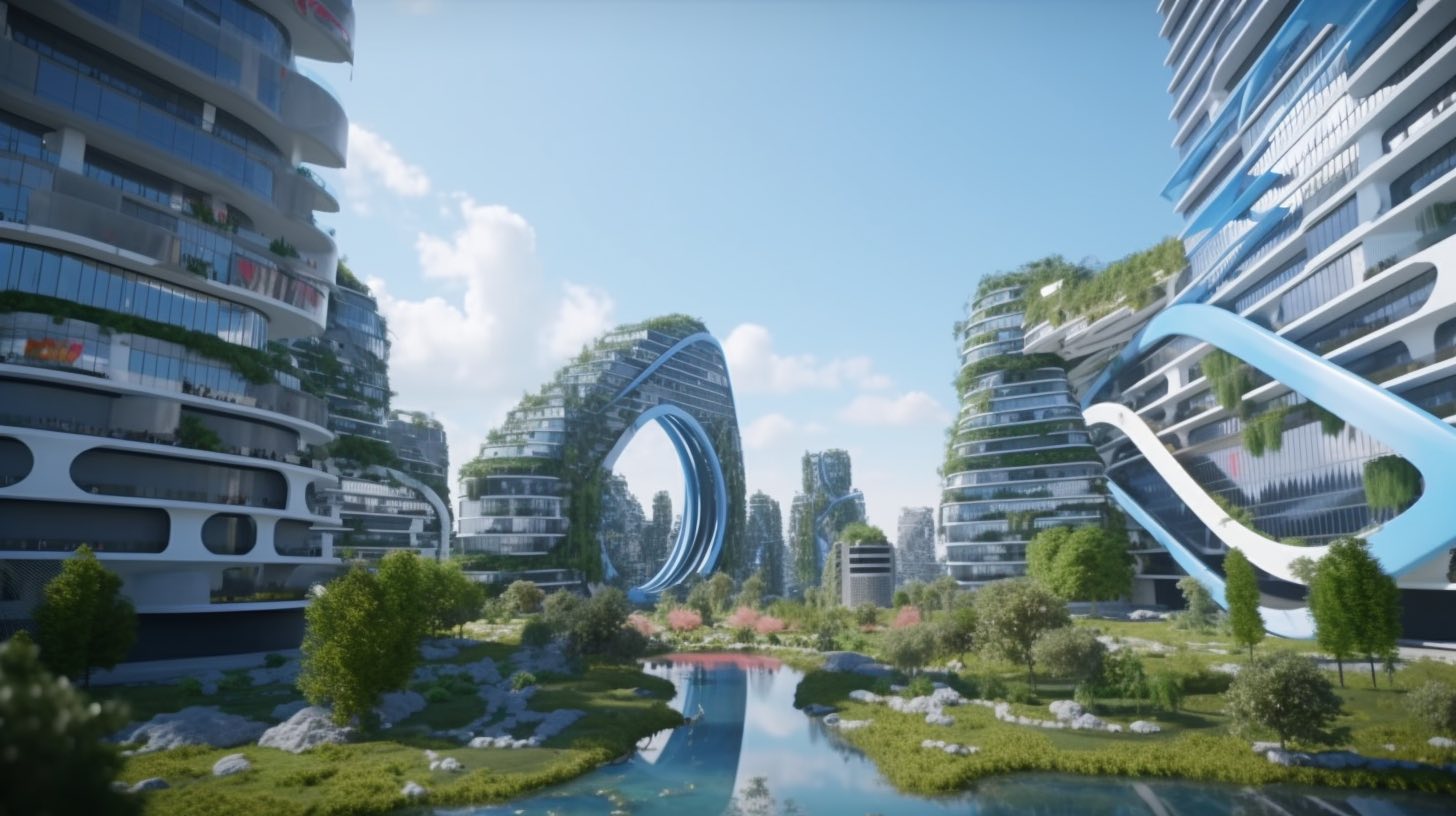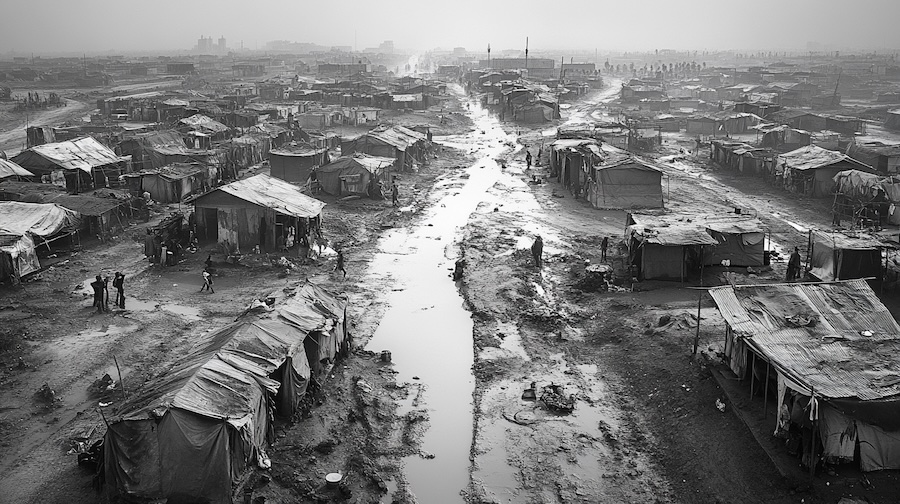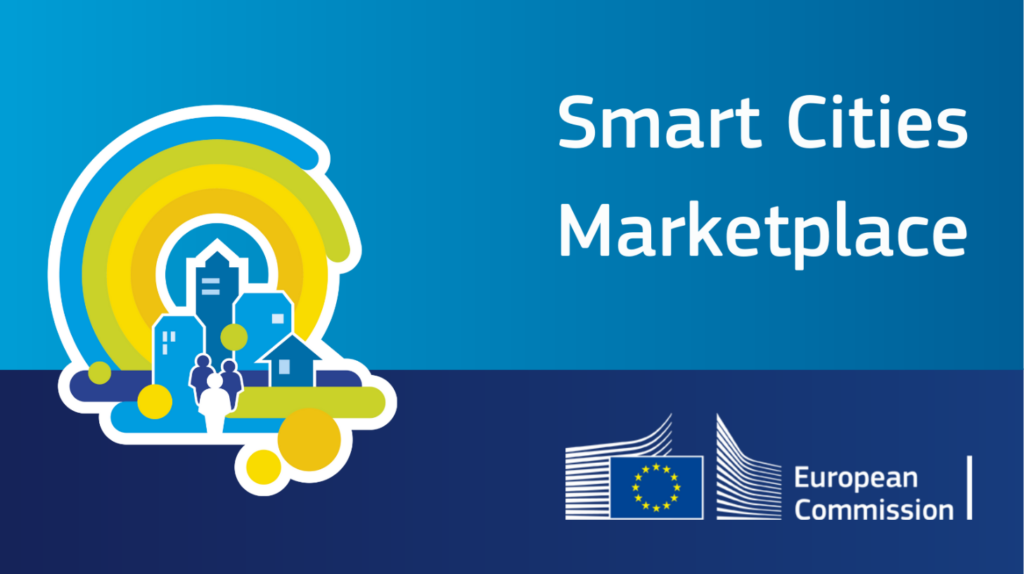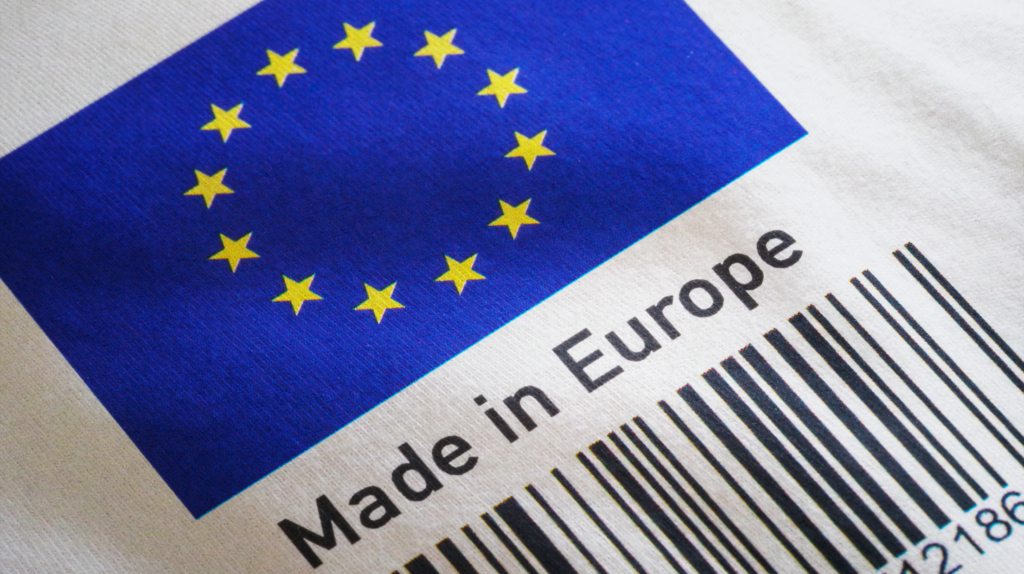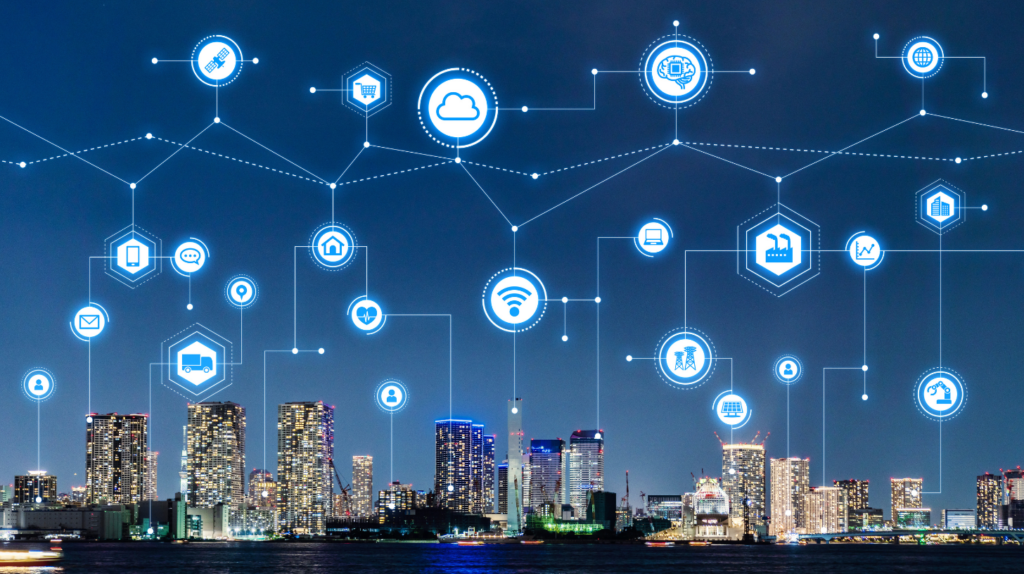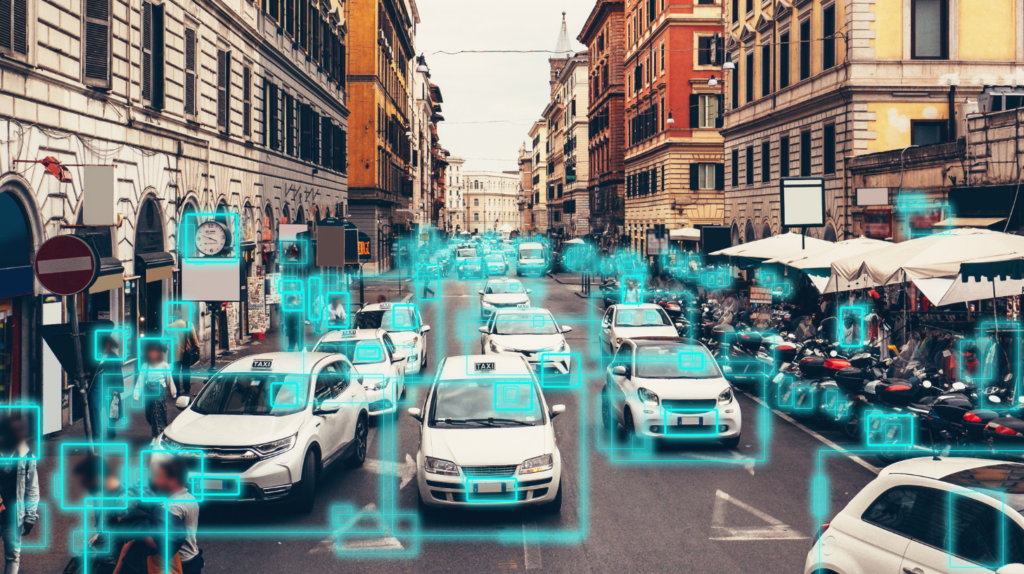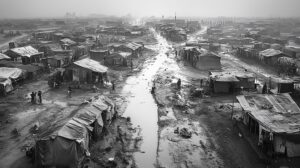As urban populations continue to grow, cities need to evolve and adapt to the challenges of the modern world. Sustainable urban development is the key to creating livable, efficient, and environmentally responsible cities that prioritise the well-being of their residents. In this article, we delve into the world of sustainable urban development. Moreover, examine how smart city initiatives, citizen engagement, green technologies, and data-driven decision-making are revolutionising urban landscapes across the globe. We will also share inspiring examples of successful sustainable urban development strategies implemented by leading cities. Providing valuable insights and lessons for other communities aspiring to embrace a greener, more intelligent future.
Please read our previous post related to project description. Smart City 3.0 represents the next level of urban development, where a city is more sustainable, efficient, and citizen-centric. Here is a map of good practices for developing Smart City 3.0:
What does it take to develop a Smart City 3.0?
Developing a Smart City 3.0 involves creating an inclusive, sustainable, and technologically advanced urban environment. This approach integrates citizen participation, smart infrastructure, and sustainability to enhance the quality of life for all residents. By focusing on these key areas, cities can achieve greater resilience and efficiency.
Sustainable Urban Development : Citizen Participation and Engagement
- Implement digital platforms for communication and collaboration between citizens and local authorities.
- Encourage active citizen involvement in decision-making processes
- Establish public-private partnerships to foster innovation.
Smart Infrastructure
- IoT sensors and devices monitor and manage city assets like transportation, water, waste, and energy systems.
- Implement smart grids for efficient energy management and distribution.
- Develop intelligent transportation systems (ITS) for traffic management and public transport.
Sustainability and Environment
- Promote green building practices and sustainable urban planning.
- Implement waste management and recycling programs.
- Encourage the use of renewable energy sources and electric vehicles.
Sustainable Urban Development: Data-driven Decision Making
- Big data analytics and AI to make informed decisions and improve city services.
- Implement open data policies and platforms to share data with citizens and private entities.
- Establish data privacy and security policies to protect citizens’ information.
Digital Equity and Inclusion
- Ensure affordable and accessible high-speed internet for all citizens.
- Promote digital literacy and skills development.
- Implement programs to support underserved communities and reduce the digital divide.
Sustainable Urban Development: Health and Well-being
- Implement smart healthcare solutions, including telemedicine, remote monitoring, and digital health records.
- Encourage active lifestyles and provide green spaces for exercise and recreation.
- Monitor and improve air and water quality.
Safety and Security
- Utilise smart surveillance systems and emergency response technologies to enhance public safety.
- Implement cybersecurity measures to protect city infrastructure and citizens’ data.
- Foster collaboration between public and private sectors to address security challenges.
Sustainable Urban Development: Economic Development
- Encourage entrepreneurship and innovation through incubators, accelerators, and co-working spaces.
- Invest in human capital development and workforce training.
- Attract global businesses and talent through incentives and supportive policies.
Smart Governance
- Implement e-governance solutions for efficient and transparent public administration.
- Utilise digital platforms to streamline services, such as online permits and licenses.
- Adopt agile governance models to adapt to new technologies and trends.
Resilience and Adaptation
- Develop strategies for climate change mitigation and adaptation.
- Implement early warning systems and disaster response plans.
- Encourage the use of innovative technologies and solutions to address urban challenges.
By focusing on these critical areas, cities can develop into more intelligent, sustainable, and livable urban environments.
Sustainable Urban Development: Good Practices
Some good practice examples from the cities using Smart City 3.0 methods:
Sustainable Urban Development: Barcelona
For example, Barcelona integrates IoT technology into its infrastructure, enhancing urban mobility and energy efficiency.
Cities worldwide are recognizing the potential of the Internet of Things (IoT). In response to the economic challenges caused by the 2008 recession, Barcelona leveraged technology. Under Mayor Xavier Trias, Smart City Barcelona integrated existing projects and launched new ones to enhance services in 12 areas including transportation, water, energy, waste, and open government. As a result, 22 programs with 83 distinct projects were initiated. This led to efficient resource and service management for sustainable social, economic, and urban development. In turn, this improved citizens’ quality of life.
Barcelona’s IoT Foundation
Barcelona’s IoT initiatives rely on its 500km fiber optic cable network. This network offers 90% fiber-to-the-home coverage and serves as the foundation for integrated urban systems. Furthermore, the fiber infrastructure enables citywide WiFi with 670 hotspots, which represents a 62% increase since 2013. This has also led to double the number of WiFi users. Additionally, the fiber network supports various IoT systems for urban services.
Energy, Water and Waste Management
Barcelona installed 19,500 smart meters to monitor and optimize energy consumption in targeted areas of the city, alongside implementing the Barcelona Lighting Masterplan in 2012, which uses smart technologies to enhance the efficiency and utility of city lampposts. Over 1,100 lampposts were transitioned to LED, and they are equipped with sensors that collect data on air quality. The city also implemented IoT technologies to remotely sense and control park irrigation and water levels in public fountains, achieving a 25% increase in water conservation for savings of approximately $555,000 per year. In waste management, households deposit waste in municipal smart bins that monitor waste levels and optimize collection routes, and there are plans to integrate sensing for hazardous or offensive waste material.
Urban Mobility
Barcelona has implemented a range of IoT technologies to improve the efficiency and sustainability of its urban systems. Its fiber network provides 90% fiber-to-the-home coverage and serves as a backbone for integrated city systems. The city has used this network to build individual IoT systems across urban services, including energy efficiency, park irrigation, waste management, transportation, and parking. The city has achieved 30% energy savings across its urban lighting system, a 25% increase in water conservation, and generated $58 million in water savings, $50 million in increased parking revenues per year, and 47,000 new jobs. These improvements have helped reduce congestion, lower emissions, and improve the quality of life for residents, workers, and visitors. Barcelona’s IoT systems have been managed and shared with citizens and city workers through Sentilo, a platform developed specifically for the city that is now open source and available for reuse by other governments.
https://iotbusiness-platform.com/insights/smart-city-barcelona-brought-internet-things-iot-life/
Sustainable Urban Development: Singapore
For example, Singapore leverages Big Data analytics to optimise public transportation and reduce congestion.
The article discusses the challenges faced by public transport operators in Singapore due to the increasing demand for services and the need for better reliability and management of congestion during peak periods. To address these issues, the government is turning to technology, including big data and analytics, to improve train reliability and integrate private transport data to provide real-time information on road traffic. The article highlights the need for every element of the public transport eco-system to be interconnected and to provide critical real-time data to manage anomalies. The article also cites examples of innovative practices in other parts of the world, such as Israel’s toll-based fast lane, which uses real-time pattern recognition to increase traffic throughput and reduce congestion. The article concludes that embracing technology and building a smarter, greener, and more efficient public transport network is crucial for Singapore’s vision of becoming a Smart Nation.
https://www.todayonline.com/commentary/harnessing-big-data-build-smarter-public-transport-system
Sustainable Urban Development: Amsterdam
For example, Amsterdam encourages the use of electric vehicles by providing a vast network of charging stations.
TotalEnergies has been awarded the concession to expand Amsterdam’s public charging network for electric vehicles (EV). The company will install 2,200 new EV charging points by the fall of 2022, in order to help Amsterdam achieve its Clean Air Action Plan goal of emission-free transport by 2030. TotalEnergies’ focus on a hassle-free and transparent customer experience for the e-driver, while ensuring the availability and quality of the charging service, helped it win the concession. The expansion will be partly based on requests from e-drivers, and a data-driven approach will be used to determine optimal locations for the charging points. TotalEnergies already operates over 6,500 charging points in the Metropolitan Region of Amsterdam and is pursuing its goal of operating more than 150,000 charging points for electric vehicles by 2025 in major European cities.
https://totalenergies.com/media/news/TotalEnergies-expands-the-charging-network-of-Amsterdam-with-2200-new-EV-charging-points
Sustainable Urban Development: Copenhagen
For example, Copenhagen employs smart sensors to monitor air quality, enabling informed decisions on emission control.
Since 2016, Copenhagen Solutions Lab has been working to establish a coherent data base for air pollution in Copenhagen. We work on and test solutions to develop new knowledge that can form the basis for policy development and other activities and use mobile and stationary sensors in partnership with both companies and universities.
The air pollution in Copenhagen annually costs the society DKK 4 billion and has major human consequences such as several sick days, hospital admissions and approx. 550 premature deaths each year.
Focus area
Copenhagen Solutions Lab focuses on developing data to support solutions that:
- Reduce air pollution in Copenhagen
- Reduces Copenhageners’ exposure to air pollution by either creating urban solutions that cause Copenhageners to stay in the areas with least air pollution or by designing urban spaces so that Copenhageners come into contact with air pollution as little as possible
- Examine how air pollution is transmitted to buildings.
- Air View project: Collection of city-wide data sets in collaboration with Google, University Of Utrecht, and Aarhus University (Danish Center for Environment).
From October 2018 and throughout 2019, a Google Street View car with advanced measuring equipment mapped air pollution at street level all over Copenhagen, thus giving new insight into the extent of local air pollution street by street. The car has been equipped by scientists from Utrecht University and measures soot, fine and ultrafine particles, carbon dioxide, and nitrogen dioxide. When the big amount of data has been analyzed and validated, an air pollution map over Copenhagen will be created and the data will be made available for policymakers, the municipality, researchers, and citizens.
- Designing City Spaces in collaboration with Gehl Architects
The project is based on the idea that the planning and organization of the city affects the ways we live. The goal is to provide practitioners, urban planners, and decision makers with tools in the form of fact-based design codes for healthy urban environments that at the same time work as an invitation to outdoor and social activities. This effort augments data on hyperlocal air quality measurements from the Airview project between Google and the City of Copenhagen with public life data from Gehl. The project will develop concrete design propositions to reduce pollution, as well as three tools that can be used to integrate considerations of air pollution into the design of urban spaces.
- Collection of data on air quality at five measuring stations around the city
A total of five air measurement stations have been set up, which over a three-year period will measure the air’s content of pollutants, such as nitrogen dioxide (NO2), particles (PM2.5), ultrafine particles (UFP), and the substance Black Carbon, which mainly originates from car exhaust and stoves. The five measuring stations are located in areas characterized by heavy traffic and stoves. The supplying of measurement stations and data is carried out by the company Force Technology, which won the tender in fierce competition with both Danish and foreign companies
https://nscn.eu/Copenhagen/CoherentDataOnAirPollution
Sustainable Urban Development: Stockholm
For example, Stockholm promotes the development of eco-districts to reduce its carbon footprint and improve sustainability.
The Stockholm Royal Seaport is a 650-acre area that has become a model for sustainable urban development. It was the focus of a 20-year sustainability program created by the city in 2010, with the goal of producing no more than 1.5 tonnes of CO2 per person by 2020, a level that could help hold global warming to 2°C. Ultimately, the Seaport is supposed to produce more energy than it consumes.
The area is known as a “second-generation sustainable city district” and serves as a test-bed for sustainability requirements that may eventually spread throughout the city and Sweden. It succeeded Stockholm’s first eco-district, Hammarby Sjöstad, which was built on a polluted ex-industrial site.
Hammarby Sjöstad’s masterplan called for the construction of 11,000 environmentally-friendly residential apartments, using sustainable materials and new public transit, with plenty of green space. The district’s design included district heating and cooling, district recycling, and low-flow devices to minimize water use.
The district’s biogas and heat are recovered from its sewage, and residual sludge is used as fertilizer. Buildings must meet high energy-efficiency standards and many sport solar panels or building-integrated photovoltaics. Developers also have to provide a certain amount of local renewable energy.
The district was built as a public-private partnership, with each apartment building owned by an association of its residents. Local car-sharing, a free ferry, and new bus and tram service are available, and ground floor commercial spaces in apartment buildings are occupied by shops, cafes, and restaurants.
For example, the city conducted a pilot project to build an energy-positive building, one that produces more energy than it consumes, and new structures in the Seaport district are to produce at least 2 kW-hrs of renewable energy per square meter. Overall, the Stockholm Royal Seaport serves as an impressive example of sustainable urban development for the rest of the world.
https://talkofthecities.iclei.org/stockholm-pursues-climate-holy-grail-a-fossil-fuel-free-future-part-5-new-eco-districts/
Sustainable Urban Development: Tokyo
For example, Tokyo implements intelligent water management systems, conserving resources and preventing water waste.
Tokyo, the bustling capital of Japan, has long been a city that values sustainability and innovation. With a population of over 13 million people, Tokyo has been implementing numerous initiatives to conserve resources and prevent waste. One of these initiatives is the implementation of intelligent water management systems, which are designed to manage the city’s water resources more efficiently.
The city has been facing challenges in managing its water resources due to the rapidly growing population, increased industrialization, and climate change effects. To address these issues, Tokyo has been investing in intelligent water management systems, which use cutting-edge technologies to monitor, analyze, and optimize water usage.
The system works by integrating various data sources such as weather forecasts, water usage patterns, and water quality measurements. This data is then analyzed using machine learning algorithms to provide real-time insights into water usage and to identify areas where water waste can be reduced.
One of the primary features of the system is the installation of smart water meters, which monitor water usage in real-time. These meters are equipped with sensors that measure the flow of water and send this data to a central server. This allows the water company to identify potential leaks and water wastage in the network, which can be addressed promptly.
In addition to smart water meters, Tokyo has also implemented water-saving technologies such as low-flow showerheads, water-efficient toilets, and rainwater harvesting systems. These technologies are aimed at reducing the amount of water consumed by households and industries, thus conserving resources.
To further promote water conservation, Tokyo has also launched a public awareness campaign to educate residents on the importance of water conservation and the impact of water waste. The campaign includes outreach programs in schools, public events, and social media campaigns.
As a result of these initiatives, Tokyo has been able to reduce water waste significantly, and the city’s water consumption has remained stable despite the growing population. According to the Tokyo Metropolitan Government, water consumption in the city has decreased by 17% since 2000, which is a remarkable achievement.
In conclusion, Tokyo’s intelligent water management system is a great example of how technology can be used to address environmental challenges. By implementing smart technologies and promoting awareness among residents, Tokyo has been able to conserve its water resources and prevent water waste effectively. As the city continues to grow, it will be essential to continue investing in sustainable technologies and initiatives to ensure a better future for Tokyo and its residents.
Sustainable Urban Development: Helsinki
For example, Helsinki engages citizens through digital platforms, fostering collaboration and transparency in urban planning.
Submitting a project for the city office involves understanding a rather complex system and comprehending what the whole city needs. Such a complicated process often discourages citizens to participate. As a result, people who want to contribute to their cities are a powerful and frequently underutilized resource.
Thinking about how to facilitate the ideation of citizen projects, the city of Helsinki decided to develop a game. The city needed solid and diverse proposals for the challenge of the municipal budget. In the participatory budget, citizens decide how to allocate part of a municipal or public budget through a democratic deliberation process. And this is where the idea for the game, called Omastadi, which is the same name as the participatory budgeting platform and strategy developed by the city, came about.
The participatory budget scheme was created in Porto Alegre, Brazil, in 1988, and has been adapted by more than 1,500 cities around the world. The Omastadi game, one of the first of its kind in the world, is specifically designed to be played by citizens as part of the participatory budgeting process.
The idea behind the Omastadi game is to, on the one hand, make the participatory budgeting process understandable and inclusive for all, and, on the other hand, to motivate a larger number of citizens to participate. ”The game aims to empower people and guide them on how to create feasible projects that are aligned with the objectives of the city” says Kirsi Verkka, the development manager for the city of Helsinki. It is designed to foster qualities such as equal participation, creativity, and civic learning, and as an initiative of the city administration, it is fully funded by the municipality.
https://www.goethe.de/prj/zei/en/nac/22257137.html
Sustainable Urban Development: Melbourne
For example, Melbourne invests in renewable energy projects, striving to become a carbon-neutral city.
The Melbourne Renewable Energy Project (MREP) is an innovative way to buy renewable energy as a group. We joined MREP in 2014 to invest in the construction of a purpose-built 39 turbine, 80 MW windfarm. The MREP group includes Melbourne local governments, universities, cultural organisations and corporations. The turbine and wind farm are at Crowlands, which is near Ararat in north-west Victoria.
The wind farm gives all MREP members access to clean renewable energy. Melbourne-based clean energy company Pacific Hydro owns and operates the wind farm. The retail arm of Pacific Hydro is Tango Energy, who supply the power.
Since 2019, we have changed all our electricity use in Council buildings to come from 100% renewable energy. This is because of our involvement in MREP. This change to renewable energy has allowed us to reduce our carbon emissions by 69% since 2011.
https://www.merri-bek.vic.gov.au/building-and-business/projects/energy-projects/
Sustainable Urban Development: Dubai
For instance, Dubai incorporates smart grids to manage electricity distribution and consumption efficiently.
Dubai Electricity and Water Authority (DEWA) is actively contributing to transform Dubai into the smartest city in the world. To support this objective, DEWA developed a comprehensive strategy to implement a smart water and electricity infrastructure. This is what we call a Smart Grid, which will provide advanced features and includes automated decision-making and interoperability across the entire electricity and water network. DEWA’s Smart Grid Programme, with investments totaling AED 7 billion, supports the directives and the vision of HH Sheikh Mohammed bin Rashid Al Maktoum, Vice President and Prime Minister of the UAE and Ruler of Dubai, to make Dubai the smartest and happiest city in the world.
The programme is a key element in DEWA’s strategy to develop an advanced infrastructure. It supports the Dubai Clean Energy Strategy 2050 and the Dubai Net Zero Emissions Strategy 2050 to provide 100% of the energy production capacity from clean energy sources by 2050.
In 2014, DEWA developed its first Smart Grid strategy up to 2035, which is a key component of a smart city. DEWA successfully completed the short-term goals of the Smart Grid Strategy 2014-2035. In 2021, DEWA launched its updated Smart Grid Strategy up to 2035, evolving from a technology-led approach to a value-driven approach, as well as transitioning DEWA’s 10 smart grid programmes into 6 themes, covering 19 globally leading smart grid capabilities.
The following are the main governance themes that ensure a smooth, quick, and effective functioning of DEWA’s Smart Grid.
Foundational Capabilities
https://www.dewa.gov.ae/en/about-us/strategic-initiatives/smart-grid
Grid Automation
Smart Energy Solutions and Green Mobility
Smart Water
Smart Grid Artificial Intelligence
Innovative Value-Added Services
Sustainable Urban Development: San Francisco
For instance, San Francisco adopts intelligent waste management solutions, reducing landfill waste and promoting recycling.
Sustainable Urban Development: In 2002, San Francisco adopted a goal of 75% diversion by 2010 and a long-term goal of zero waste. So, it exceeded the first goal two years early, soon recovering over 80% and cutting its disposal in half. The city initiated its Environment Code in 2003 based on the Precautionary Principle. It adopted a Construction and Demolition Debris Recovery Ordinance in 2006 requiring the recovery of C&D materials.
The city’s Mandatory Recycling and Composting Ordinance, passed in 2009, requires everyone in San Francisco keep recyclables, compostables and trash separated. In 2018, San Francisco updated its zero waste commitments to reducing solid waste generation 15% and disposal to landfill or incineration again 50% by 2030.
In 2018, the Commission on the Environment also adopted a resolution outlining the Department of the Environment’s commitment to racial equity and announcing its Racial Equity Initiative. The City and County of San Francisco recognized the need for a cohesive and coordinated approach to addressing racial inequities and, in 2019, adopted an ordinance (pdf) creating an Office of Racial Equity and mandating departments develop Racial Equity Action Plans.
Blue recycling, green compost, and black trash collection bins on a San Francisco street with San Francisco skyline in the background.
https://www.epa.gov/transforming-waste-tool/zero-waste-case-study-san-francisco
San Francisco’s iconic 3-stream collection program. Photo credit: Larry Strong
San Francisco implemented an innovative three-stream citywide residential and commercial collection program, with separate bins and a full range of size and frequency options, for commingled recyclables; compostables, including all food scraps, soiled paper and plant trimmings; and any remaining trash. Outreach uses lots of images and is done in Chinese, Spanish and other languages with customer service being able to communicate in almost any language.
Sustainable Urban Development: Partners Good Practices
Sustainable Urban Development: Walktogether
China’s Green Great Wall program
Goals of the best practice
The initiative aims to combat desertification, improve air quality likewise increase the country’s forest cover by planting 100 billion trees by 2050.
Target Group/ Beneficiaries
1. The environment: The program aims to combat desertification, improve air quality and increase the country’s forest cover which can help to reduce soil erosion in addition improve water conservation and create habitats for wildlife.
2. The global community: The program can contribute to the global effort to combat desertification likewise improve air quality and reduce greenhouse gas emissions.
3. Future generation: The program also aimed at ensuring a sustainable future for China’s population by improving the environment, and create better living conditions for future generations
Smart city/Municipality taken as a good example
Many countries around the world have implemented afforestation likewise reforestation initiatives similar to China’s Green Great Wall pro- gram. For example – Ethiopia’s “Green Legacy” initiative, aims to plant 4 billion trees in the country by planting 350 million seedlings per year.
Resources and skills needed to carry out the best practice
The program has had some success in increasing China’s forest cover, but it also faces challenges such as lack of funding, lack of proper planning, and lack of monitoring and evaluation. The program is also facing criticism for not considering the needs of local communities, and for promoting monoculture plantation which is not ecologically sustainable.
Methodology
There are several key dynamics or components necessary to develop a large-scale afforestation initiative like China’s Green Great Wall program.
- A clear and realistic plan: The initiative should have a clear, well-defined plan outlining the goals, objectives, and strategies for achieving its afforestation targets.
- Adequate funding: Large-scale afforestation requires significant funding for tree planting, land preparation, and ongoing maintenance.
- Monitoring and Evaluation: A robust monitoring and evaluation system is necessary to track progress, identify challenges and adapt the plan accordingly.
Success Factors
Political stability: The initiative needs a stable political environment to ensure continuity and commitment to the initiative.
Economic stability: Economic stability is necessary to ensure that the initiative has the funds necessary to support the planting, maintenance and monitoring of the new forests. Support from international organizations. Adequate funding: The initiative needs to have stable and sufficient funding to support tree planting, land preparation, and ongoing maintenance.
Resources
https://en.wikipedia.org/wiki/Great_Green_Wall_(China)
Sustainable Urban Development: South Korea’s Eco Bag
Goals of the best practice
South Korea’s Eco Bag program is a government-led initiative aimed at reducing the use of single-use plastic bags in retail stores. Under this program, retailers are required to charge customers a fee for plastic bags, to encourage the use of reusable bags.
Target Group/ Beneficiaries
Direct beneficiaries include:
• Retailers: Retailers should charge customers a fee for plastic bags, which can help to increase revenue and reduce costs associated with providing single-use bags.
• Customers: Customers should bring their reusable bags, which can save money and help to reduce the use of plastic bags.
Indirect beneficiaries include:
• The environment: the reduction in the use of plastic bags helps to reduce the amount of plastic waste and its negative impacts on the environment.
• Wildlife and marine life: the reduction in the use of plastic bags helps to reduce the amount of plastic pollution in the ocean and the harm it causes to marine life and wildlife.
Smart city/Municipality taken as a good example
Some examples of countries that have implemented similar initiatives include:
- Ireland: introduced a plastic bag tax in 2002, which led to a 90% reduction in the use of plastic bags.
- China: In 2020, China banned the production and sale of ultrathin plastic bags and set a goal of reducing plastic waste by 30% by 2025.
- United Kingdom: In 2019, a plastic bag tax was introduced, which requires retailers to charge 5 pence (about 6 cents) for each single-use plastic bag.
Resources and skills needed to carry out the best practice
The initial situation in South Korea before the implementation of the Eco Bag program was the excessive use of single-use plastic bags in retail stores. The use of plastic bags not only generated a significant amount of plastic waste but also had negative impacts on the environment, such as pollution of oceans and harm to wildlife.
The specific difficulties that the Eco Bag program seeks to address include:
- Decreasing the amount of plastic waste being generated in South Korea
- Encouraging the use of reusable bags
- Reducing the negative impacts of plastic waste on the environment
- Raising awareness about the importance of reducing the use of single-use plastic bags
Methodology
1. Government support and regulations: The Eco Bag program is a national initiative, implemented by the government, and requires legislation and regulations to be put in place to ensure compliance by retailers.
2. Retailer compliance: Retailers, including supermarkets, convenience stores, and department stores, are required to comply with the program, by charging customers a fee for plastic bags, and promoting the use of reusable bags.
3. Consumer education and awareness: The program aims to raise awareness and educate consumers about the environmental impacts of single-use plastic bags and the benefits of using reusable bags.
Success Factors
Internal conditions:
- Strong government support and leadership: The program requires a strong government commitment to implement and enforce regulations and compliance.
- Adequate funding: The program requires adequate funding to cover the costs of implementing the program, including infrastructure and logistics, consumer education and awareness, and monitoring and evaluation
External conditions:
- Institutional support: The program requires institutional support from other government agencies, retailers, and organizations to ensure that the program is implemented effectively.
- Economic support: The program requires economic support, such as subsidies or tax breaks for companies that implement eco-friendly practices to support the adoption of these practices.
Resources
Sustainable Urban Development: Norway electric vehicle
Goals of the best practice
The primary purpose of using electric cars (EVs) is to reduce dependence on fossil fuels and decrease greenhouse gas emissions.
Target Group/ Beneficiaries
1. The environment: Electric cars emit no pollutants or greenhouse gases from their tailpipes, which can help to improve air quality and reduce the overall environmental impact of transportation.
2. Consumers: Electric cars are generally cheaper to operate than gasoline cars, as electricity is cheaper than gasoline and they require less maintenance. Additionally, electric cars have lower operating costs, such as oil changes and other maintenance, which can save money for consumers.
3. Governments: Encouraging the use of electric cars can help governments meet their emissions reduction targets and reduce dependence on fossil fuels.
Smart city/Municipality taken as a good example
Norway is known for its high electric vehicle (EV) adoption rate, with over 50% of new cars sold in the country being EVs. The country has implemented policies such as tax exemptions and free public parking for EVs to encourage their use. The Netherlands is also known for its high EV adoption rate and has implemented policies such as tax exemptions and free public parking for EVs.
Resources and skills needed to carry out the best practice
One of the main challenges facing electric cars is the limited range of current electric vehicle models and the lack of charging infrastructure. So, this can make it difficult for electric cars to compete with gasoline cars in terms of convenience and flexibility.
Methodology
Charging infrastructure:
Electric cars need to be charged, and charging infrastructure includes the charging stations and the electrical grid that supplies the power to charge the cars.
Control system: Electric cars use sophisticated control systems to manage the powertrain likewise battery, and other systems. Because, these systems use sensors and software to monitor and control the car’s performance, including the speed, braking, and power output.
Success Factors
1. Consumer education and awareness: Electric cars have unique characteristics compared to traditional cars, and consumers need to be educated about the benefits and limitations of electric cars, as well as how to properly charge and maintain them.
2. Government incentives and regulations: Government incentives, such as tax credits, and regulations, such as emissions standards, can help to make electric cars more attractive to consumers and manufacturers.
Resources
Sustainable Urban Development: Building and Construction Authority (BCA) of Singapore
Goals of the best practice
Green Mark is a green building rating system developed by the Building and Construction Authority (BCA) of Singapore to assess and recognize environmentally friendly buildings. For example, the scheme evaluates buildings based on their energy efficiency, water efficiency, indoor environment quality, and sustainable design and construction practices.
Target Group/ Beneficiaries
The direct beneficiaries are building owners, developers, and tenants who occupy the green buildings that have earned the Green Mark certification.
Indirect beneficiaries of the Green Mark scheme include the broader society and the environment.
Smart city/Municipality taken as a good example
The Green Mark scheme is a national-level program implemented in Singapore, so it is not limited to specific cities or municipalities. It applies to all types of buildings in the country.
Resources and skills needed to carry out the best practice
The program was developed in response to the growing concerns over the environmental impact of buildings and the need for more energy-efficient and environmentally-friendly buildings. The specific difficulties that the Green Mark scheme seeks to address include reducing energy and resource consumption, reducing greenhouse gas emissions, and promoting sustainable design and construction practices in the building industry.
Methodology
The Green Mark scheme requires several key components to be successful. Firstly, government support is crucial. The scheme is initiated and supported by the government, which provides necessary regulations and incentives to implement the scheme.
Secondly, technical and professional expertise is necessary to assess the environmental impact of buildings and ensure their compliance with the Green Mark standards. This expertise is crucial in ensuring that the scheme is implemented effectively and that buildings meet the necessary sustainability criteria.
Thirdly, financing is a key component of the Green Mark scheme. Access to financing for green building projects enables building owners and developers to implement sustainable building practices. This is essential in ensuring that the scheme is accessible and can be implemented by a wide range of stakeholders.
Success Factors
Internal:
- lear policies and guidelines are necessary to ensure consistency and fairness in the assessment and certification process.
- Regular updates of the Green Mark criteria and standards are essential to keep up with advancements in sustainable building practices.
External:
- Strong political and institutional support from the government, relevant agencies, and private sector organizations is critical to the success of the scheme.
- Positive public perception and demand for green buildings can drive the uptake and implementation of the scheme.
Resources
Green Mark Certification Scheme
Sustainable Urban Development: CIP
Bristol, United Kingdom
Goals of the best practice
Green Bristol is a city-wide initiative aimed at making Bristol, UK, a more sustainable and environmentally friendly place to live and work. The initiative brings together businesses, residents, and local authorities to promote sustainability, reduce carbon emissions, and enhance the city’s green spaces.
Overall, Green Bristol is a comprehensive and community-driven effort to create a more sustainable and environmentally friendly city for all its residents.
Target Group/Beneficiaries
The entire community of Bristol, including citizens, businesses and authorities
Smart city/Municipality taken as a good example
Bristol, United Kingdom
Resources and skills needed to carry out the best practice
This practice requires collaboration by many stakeholders from the city, including community engagement and businesses such as shops and restaurants. During that period, stakeholders from all over Bristol needed to work collectively to achieve the goals which were the encouragement of local people to participate in making Bristol Greener. That resulted in many businesses being granted Green Tourism awards.
Methodology
-Partnership and collaboration: Green Bristol relies on partnerships and collaborations between local authorities, businesses, and residents. To build and maintain these partnerships, effective communication and collaboration skills were likely used to bring these different groups together to work towards a common goal.
– Life Cycle Assessment (LCA): An LCA is a tool used to assess the environmental impact of a product, process, or service over its entire life cycle. It can be used to identify areas for improvement in sustainability and to set goals for reducing the environmental impact of a city.
Success Factors
This is the UK’s second Gold Sustainable Food City, the first Cycling City and a former European Green Capital. Bristol is also a Fairtrade City, trading fairly with nearly five million workers in 58 developing countries.
Resources
Sustainable Urban Development: Curitiba, Brazil
Goals of the best practice
“The Green Exchange Program is a city-wide initiative where residents trade recyclable materials for fresh produce. For instance, every four kilograms of recyclables can be traded for one kilogram of fresh fruits and vegetables. In this way, the program guarantees the sale of surplus crop production and helps to keep the environment clean by encouraging recycling efforts. Moreover, a partnership between SMMA (Secretaria Municipal do Meio Ambiente) and SMAB (Secretaria Municipal do Abastecimento), two Curitiba city agencies, has created the Green Exchange Program.
The program has several important goals. Firstly, it aims to assist small farmers with crop sales and prevent waste among farms with crop surpluses. Secondly, it strives to make fresh produce more accessible and affordable for low-income residents. For example, it aims to improve the nutritional patterns of the population by facilitating fresh produce eating habits. Finally, it seeks to encourage and incentivize recycling and environmental preservation among Curitiba residents.”
Target Group/Beneficiaries
Curitiba residents
Smart city/Municipality taken as a good example
Curitiba, Brazil
Resources and skills needed to carry out the best practice
Disaster risk reduction is an essential element of sustainable urban development. And in many cities, the biggest disaster risk comes in the form of flooding. That’s certainly the case in Curitiba, Brazil. Sustainable development is impossible without protections for an area’s ecosystem and its native plants and animals.
Methodology
-Funds from the Curitiba Department of the Environment (SMMA) are used to buy surplus crops from regional farms.
-These farms are represented and coordinated by Paraná Producers Federation (FEPAR) — an association of small and medium farmers in the metropolitan region.
-The municipality then exchanges these crops with city residents for recyclable materials (paper, cardboard, glass, metal, oil).
-The exchange takes place every 15 days in 101 different trading sites across the city.
-Every four kilograms of recyclables can be traded for one kilogram of fruits and vegetables; two liters of plant or animal-based oil can be exchanged for one kilogram of fruits and vegetables.
Success Factors
By 2007 the program had recovered over 45 thousand tons of waste from ending up in landfills. Today, the program is still in existence and has developed abundantly. It now includes the Special Green Exchange Program which takes place in schools city-wide.
Citizens do not need to register for this program; they must show up to exchange sites throughout the city on designated dates. Predetermined dates and times are shared with residents through an annual calendar established by the SMMA.
Resources
Sustainable Urban Development: San Francisco, USA
Goals of the best practice
A zero-waste goal acts as a guiding principle for San Francisco to eliminate waste and pollution in resource and materials management by promoting: redesign of manufacture, recycling of materials, extended producer responsibility, valuing the highest and best use of materials, and creating a whole system closed-loop material cycling based economy for long term true sustainability.
Over the past 20 years, San Francisco’s zero waste goal has driven tremendous policy and program progress.
Target Group/Beneficiaries
San Francisco citizens
Smart city/Municipality taken as a good example
San Francisco, USA
Resources and skills needed to carry out the best practice
In 2009, the city introduced the ‘Mandatory Recycling and Composting Ordinance’. This legislation makes it compulsory for everyone in San Francisco – including residents, businesses, government and even tourists – to properly recycle and compost their waste. Anyone who is found not separating recyclables and compostables from their trash can be subject to a fine.
Methodology
-The city collects about 370,000 tons per year of compostables. Of that amount, 150,000 tonnes is food waste from households and businesses (or an average of 3.4 kg per person per week). This waste is sent to a facility for commercial composting.
-The city charges residents and businesses for the collection of their bins based on the volume of waste presented, which is a function of both bin size and frequency of collection.
-The collection happens in three different bins (that is the reason it’s called three-stream). A recycle bin that includes cardboard, cartons, cassette/VHS tape, glass, metal, paper and plastic. A compost bin that includes compostable containers, dirty paper, food containers, food scraps, organic material, wood and yard trimmings. Finally, a landfill bin includes broken glass/pottery, diapers, disposable ice packs, disposable razors, light bulbs and mixed materials (toothpaste tubes, shiny food wrappers, pet poops etc.)
Success Factors
Zero Waste… is the highest and best use of resources–eliminating waste throughout the product lifecycle where nothing goes to landfill or high-temperature destruction. It exceeded the first goal two years early, soon recovering over 80% and cutting its disposal in half. However, this practice is still ongoing.
Resources
Sustainable Urban Development: Toronto, Canada
Goals of the best practice
LEED (Leadership in Energy and Environmental Design) is a green building certification system developed by the US Green Building Council (USGBC). It certifies buildings that are designed and built to meet high standards of sustainability and environmental responsibility. LEED Toronto specifically refers to the application of the LEED certification program in the city of Toronto, Canada.
Target Group/Beneficiaries
Building and Construction Stakeholders in Toronto and the general population
Smart city/Municipality taken as a good example
Toronto, Canada
Resources and skills needed to carry out the best practice
“The outcome of LEED in Toronto has been positive, with a growing number of buildings in the city achieving LEED certification. As a result, the adoption of LEED in Toronto has contributed significantly to the city’s efforts to reduce its carbon footprint and promote sustainability in the built environment.
LEED-certified buildings in Toronto offer several benefits. Firstly, they typically use less energy and water, emit fewer greenhouse gases, and provide better indoor air quality and comfort for occupants. Moreover, by promoting green building practices and technologies, LEED has helped raise awareness and drive innovation in the building and construction industry. Therefore, the widespread adoption of LEED has played a crucial role in making Toronto a more sustainable and environmentally friendly city.”
Methodology
- Additionally, LEED’s proven and holistic approach helps virtually all building types lower carbon emissions, conserve resources, and reduce operating costs by prioritizing sustainable practices.
- Furthermore, LEED uses a points-based system to evaluate buildings and assigns a certification level based on the total number of points earned. Moreover, the categories for earning points are designed to address key environmental and sustainability issues in the building and construction industry.
Success Factors
Green building in Toronto, Canada has reached a significant milestone, with the Canada Green Building Council (CaGBC) announcing that there are now over 1 billion square feet of LEED projects in Canada. Also, Toronto’s carbon footprint has decreased.
Resources
Sustainable Urban Development: Kean
Copenhagen, Denmark
Goals of the best practice
Green roofs are rooftops covered with earth so that plants can grow on them, leaving aside traditional materials like concrete or tiles. When it comes to sustainable architecture in big cities, which are beset by serious air pollution and high level of CO2 emissions into the atmosphere, this is a measure with a very positive impact leading to a sustainable development.
Target Group/Beneficiaries
The direct beneficiaries are the citizens of Copenhagen.
Smart city/Municipality taken as a good example
Copenhagen, Denmark.
Resources and skills needed to carry out the best practice
In 2009 Denmark was in charge of the UN Climate Change Conference COP15 which defined the framework for the strategies that could be implemented to meet the challenges of climate change. During that period, the focus on green roofs intensified setting a goal for urban design with green roofs in the Climate Plan of the City of Copenhagen. Since then, Green Roofs have become integrated in different guidelines such as the guidelines for Sustainability in constructions and civil works, which mandates green roofs for all the municipalities buildings. Green roofs are also a part of the city’s Strategy for Biodiversity. Since 2010 green roofs are mandated in most new local plans. A calculation based on approved new local plans mandating green roofs gives a total of 200.000 m2 of green roofs to be installed. Today The City of Copenhagen has more than 40 green roofs.
Methodology
The rooftop has to be fitted out to house the chosen vegetation; a special cover has to be made in order to avoid potential water leaks into the building.
Plants have to be kept healthy, and you have to choose those species which best adjust to the type of weather (plants needing more or less water, or more or less light).
Success Factors
In order not to affect the building structure and for the sake of their installation, they need to have several layers, each one performing a function –they will thus need at least an anti-rooting layer, a draining one letting the water pass but not the earth and an impermeable and insulating layer preventing any harm to the building roof.
- They can sometimes be built with some slope to improve their drainage, though this makes it hard for the soil to keep wet.
- They can be extensive or intensive, according to the type of vegetation and tending they involve. The intensive ones are like regular or vegetable gardens, needing greater care, and the extensive ones hardly need to be tended annually though they are not usually used.
Resources
Sustainable Urban Development: Lagos, Nigeria
Goals of the best practice
The project Wecyclers was born in order to offer a sustainable solution to the garbage crisis present in Nigeria. The project aims to combat poverty and pollution.
Target Group/Beneficiaries
Beneficiaries are both employees and participants. The social enterprise picks up recycled goods from homes and businesses once per week, sorts the waste, and sells it to Nigerian recycling companies. When Lagos residents register their households (free of charge) or businesses with Wecyclers, they receive points for every kilogram of recycled goods they supply, which they can then exchange for cash or household items.
Smart city/Municipality taken as a good example
Lagos, Nigeria
Resources and skills needed to carry out the best practice
Resources and skills needed to carry out the best practice The urban areas of Nigeria face a garbage crisis, exacerbated by poor political organization and ineffective waste management systems. Lagos, Nigeria’s largest city, has a population of 21 million, but only 40 per cent of its waste is collected, and just 13 per cent is recycled.
Wecyclers combats poverty and pollution by providing job positions and incentives and at the same time a cleaner, more livable urban environment, being able to pass even in narrow streets where cars can’t pass.
Methodology
Compared to cars, cargo bikes can travel down narrow corridors where cars do not fit, allowing Wecyclers to bring waste management services to crowded neighbourhoods in need.
Success Factors
The beauty of this good practice is that it can be applied in any context. Cargo-bikes can be used in different urban settings because they are smaller and more practical than any other means of transport that can be used to collect goods from homes, companies etc.
Resources
Sustainable Urban Development: Lima, Nairobi and Dhaka
Goals of the best practice
People in urban areas consume up to 70 percent of the global food supply, but much of it is thrown away. Although the causes of food waste vary from one region in the world to another, generally poor food planning, inadequate packaging, improper storage and cultural practices are all contributing to the problem.
In addition, food waste that is not recycled or re-used is filling up the landfills. There, it decomposes and generates methane, a greenhouse gas that is more harmful to the planet than CO2. This scenario is not just a waste of food but also a waste of energy, money and natural resources such as land and water that is used to produce and process the food.
In the municipalities of Lima, Nairobi and Dhaka, FAO has helped to create a Food Liaison Advisory Group to tackle issues of food loss and waste. One of the group’s initiatives was a city food waste taskforce that has established a composting centre for managing biomass waste. As a result, the amount of organic waste disposed of in landfills and city drainage has been cut dramatically.
Target Group/Beneficiaries
Citizens of Lima, Nairobi and Dhaka
Smart city/Municipality taken as a good example
Lima, Nairobi and Dhaka
Resources and skills needed to carry out the best practice
In Nairobi, the County Chief Officer for Agriculture noted that evidence was needed to understand the relationship between logistics in the food system, food cultures and preferences. This information would provide a baseline to support the county in understanding the status of the food system and the improvements needed. To fill this information gap, the FAO developed a Rapid Urban Food Systems Appraisal Tool (RUFSAT) with the goal of identifying food system “hotspots” that compromised or constrained the economic, social and environmental performance of the system. In Dhaka, for example, contrary to the widespread belief that market intermediaries are extracting inordinate profits, the analysis revealed that wholesalers were operating on a margin of just 2 percent. With such low margins, whole salers were often compelled to find buyers for inferior-quality products, which compromised public health.
Methodology
With the aim of rapidly (within three-four months) collecting information and understanding the complex relationships between rural food producers and urban consumers, three to four food value chains, prioritized by the FLAG, are analyzed. The food products selected for analysis have included a staple food product (rice in Dhaka, potatoes in Lima and Nairobi); fresh produce (commonly a leafy green, a root crop and a fruit crop); and either fresh fish or meat (chicken, beef, pork, mutton or goat). The value chain surveys endeavour to collect information on food sources, seasonality of supply, transport and logistics, long-term trading relationships between buyers and sellers, price margins, operational costs, food safety, food storage, food waste and key constraints impacting the business.
In addition, interactive spatial analysis through Geographic Information Systems (GIS) is conducted to integrate spatial and non-spatial data. This information is critical for urban food planning as it reveals gaps in terms of access to nutritious food and allows the FLAG to identify city neighbourhoods with high vulnerability to food insecurity or explore food environments conducive to unhealthy diets such as food deserts, food swamps and food tundra.
Success Factors
The participatory food governance mechanism foreseen in each of the three pilot project cities (NAirobi, DHAka and LIma) relied heavily on the creation of a Food Liaison Advisory Group (FLAG): a multi-stakeholder platform that collectively represents the voices of the various food system actors. These include both private and public sectors, civil society organizations, and other stakeholders affected by government decisions. The latter can be actors representing other commodity systems from the commerce industry and/ or service systems such as the health system. FLAG members, when recognized as a key resource for planning and adequately empowered, are able to lobby decision-makers, flagging potential problems and advising urban planners and policy makers at local and national levels on holistic approaches that permit sustainable food system planning.
Resources
Five ways to make cities healthier and more sustainable
Sustainable Urban Development: New York City
Goals of the best practice
Urban agriculture in the five boroughs of New York City provides countless benefits to residents, such as expanding access to healthy food, building strong community networks, improving environmental conditions in neighborhoods, offering educational opportunities, and providing jobs. There are a wide range of agricultural activities taking place in the city, from backyard and community gardens maintained by residents to school and housing development farms built and maintained by students and residents. Commercial agricultural businesses are also thriving in the city, with indoor farming, hydroponics, and aquaponics producing high-quality food and developing new technologies to provide food in an urban environment.
To connect people with opportunities to become a part of the agricultural community in the city, the NYC Urban Agriculture website serves as a one-stop shop for resources, programs, and regulations that help grow agriculture in New York City.
Target Group/Beneficiaries
The citizens of New York City are the direct beneficiaries of urban farming, as not only do the areas of the city become greener but they can also produce sustainable food at km 0. Urban farming promotes sustainable living and local ecology through food, education, and events.
Smart city/Municipality taken as a good example
New York City
Resources and skills needed to carry out the best practice
New York City, the most populous and densely populated city in the US, is also the center of the Northeast megalopolis and the largest metropolitan area in the country. To expand on this, urban farming has become a popular way to introduce greenery into urban areas while promoting sustainable and locally sourced food. These farms often serve as community gathering spaces, providing opportunities for social events and educational programs for both young and older individuals interested in farming and green careers. Some urban farms even offer tours, workshops, and unique activities like school trips and beekeeping experiences to further engage the community.
Methodology
It’s necessary for the practice to succeed to be able to involve the local population in all the activities carried out in the context of urban farming: from taking care of the farms, beekeeping, and producing sustainable food, to participation in social events and educational programs that engage youth in career paths.
Success Factors
It’s fundamental to have a well-trained staff such as educators and gardeners that can help the locals to feel included in the good practice and to understand the importance of the activities proposed. For this reason, the Community Gardens Task Force convenes stakeholders from state agencies, existing community gardens, special-use districts, public authorities, and cooperative extension services to establish and expand community gardens and the activities they conduct.
Resources
Fresh Produce and Food Education
Community Gardens and Urban Agriculture
Sustainable Urban Development: L4Y
Gothenburg, Sweden
Goals of the best practice
The goal is to implement large-scale energy systems for urban heating and cooling as a key component of green cities. These systems aim to significantly reduce energy consumption and greenhouse gas emissions, improve the reliability and resilience of energy supplies, and make housing more affordable.
Target Group/Beneficiaries
Direct beneficiaries: Urban residents
Indirect beneficiaries: Other residents and citizens
Smart city/Municipality taken as a good example
Gothenburg, Sweden
Resources and skills needed to carry out the best practice
By adopting large-scale energy systems, urban areas can reduce their energy consumption and greenhouse gas emissions while also improving the reliability and resilience of their energy supplies. This approach can also help to make living in cities more affordable by reducing energy costs. Overall, the implementation of sustainable heating and cooling systems can contribute to a more livable and environmentally conscious urban environment.
The specific difficulties that this practice seeks to address include:
- The high energy consumption and greenhouse gas emissions associated with traditional heating and cooling systems in urban areas.
- The lack of reliability and resilience of energy supplies in urban areas.
- The high cost of housing and living in cities, which can be made more affordable through the reduction of energy consumption and costs.
The skills required to develop and implement large-scale energy systems for urban heating and cooling include knowledge of heating and cooling technologies such as heat pumps and district heating and cooling systems, energy efficiency and conservation, and urban planning and infrastructure development. Additionally, knowledge of energy production and distribution, as well as the ability to analyze and interpret data, would be beneficial.
Engineers, architects, energy experts, and urban planners would likely be the main professionals involved in the implementation of such systems.
Methodology
The dynamics, mechanics, and components necessary to develop the practice of large-scale energy systems for urban heating and cooling include the following:
1. Centralized heating and cooling infrastructure and highly efficient technologies, such as heat pumps and district heating and cooling systems, to reduce energy consumption and greenhouse gas emissions.
2. A robust and resilient energy system that is less susceptible to disruption, by centralizing energy production and distribution.
3. Affordable housing by reducing energy consumption and lowering energy costs.
4. Connecting residential and commercial activities in cities to reduce energy consumption and greenhouse gas emissions, create more livable and vibrant urban environments, and promote economic development and job creation.
5. Shared district heating and cooling systems are an effective way of achieving these goals.
6. The extension of district heating to ships in their harbour to connect the urban infrastructure development mainly targeting residents of the city with the commercial activity in the city.
7. In addition, the skills required to design and implement large-scale energy systems, such as engineering and project management, as well as knowledge of sustainable energy systems and technologies.
Success Factors
The conditions necessary to make the practice of large-scale energy systems for urban heating and cooling a success include:
Internal:
1. Centralized heating and cooling infrastructure and highly efficient technologies such as heat pumps and district heating and cooling systems.
2. A robust and resilient energy system that is less susceptible to disruption.
3. Short-term thermal energy storage and the ability to smooth out demand peaks and reduce the size of energy production peaks.
4. The use of cold water from the Göta Älv River to reduce the use of harmful cooling agents, reduce noise and electricity consumption, and increase the efficiency of energy and resources.
External:
1. Support from the Swedish Energy Agency and other institutions to fund the implementation of the project.
2. The ability to connect residential and commercial activities in cities to reduce energy consumption and greenhouse gas emissions, create more livable and vibrant urban environments, and promote economic development and job creation.
3. Cooperation between city authorities, residents, and commercial entities to ensure successful implementation and maintenance of the system.
4. Effective communication and engagement with stakeholders to ensure understanding and buy-in for the project.
Resources
Combined Efficient Large Scale Integrated Urban Systems
Sustainable Urban Development: Innsbruck, Austria
Goals of the best practice
Optimized energy systems for high-performance energy districts also contribute to the sustainability and efficiency of urban environments. These systems are designed to be highly efficient, which means they can significantly reduce the amount of energy consumed by buildings in a given area. In addition to reducing energy consumption and greenhouse gas emissions, this can also help to lower energy costs for buildings in the district, making housing more affordable for residents. By demonstrating and implementing optimized energy systems, cities can take a major step towards becoming more sustainable, greener, and more livable for all residents.
These energy systems not only contribute to the sustainability and efficiency of urban environments, but they can also bring benefits to industrial and commercial zones. These systems are designed to be highly efficient, which means they can significantly reduce the amount of energy consumed by buildings in a given area. In addition to reducing energy consumption and greenhouse gas emissions, this can also help to lower energy costs for buildings in the district. This is particularly important for businesses, as lower energy costs can help to increase competitiveness and profitability.
Target Group/Beneficiaries
Direct beneficiaries: Commercial and industrial businesses, other residents of the district and residents of the other districts in the smart city.
Indirect beneficiaries: Workers of the businesses and their families, anyone using the same grid.
Smart city/Municipality taken as a good example
Innsbruck, Austria
Resources and skills needed to carry out the best practice
The initial situation is the need for cities to become more sustainable and efficient for residents and businesses by reducing energy consumption and greenhouse gas emissions, lowering energy costs, and improving the reliability and resilience of energy supplies. The specific context is the implementation of a project called SINFONIA in the cities of Bolzano, Italy and Innsbruck, Austria between 2014 and 2019.
Specific difficulties that the practice addresses:
1. High energy consumption and costs in urban environments
2. Lack of reliability and resilience of energy supplies in industrial and commercial zones
3. Need for cities to reduce their greenhouse gas emissions and become more sustainable
The practice aims to address these difficulties by implementing:
1. Optimized energy systems for high-performance energy districts
2. These systems are designed to be highly efficient
3. Can significantly reduce energy consumption and costs
4. Improve energy reliability and resilience
5. Reduce greenhouse gas emissions.
Methodology
To develop the practice of implementing optimized energy systems for high-performance energy districts, the following dynamics, mechanics, and components are necessary.
Dynamics:
1. Understanding of energy consumption patterns and usage in urban environments
2. Analysis of current energy systems and infrastructure in cities
3. Identification of areas for improvement in energy efficiency and reliability
4. Regular monitoring and evaluation of energy systems to ensure effectiveness and identify potential improvements
Mechanics:
1. Retrofitting of building envelopes to improve insulation and air sealing to reduce heat loss and increase energy efficiency
2. Integration of renewable energy sources such as solar panels and wind turbines to generate electricity
3. Use of heat pumps, district heating and cooling systems, and poly generation to improve energy efficiency
4. Recovery of waste heat to reduce energy consumption
Components:
1. Energy-efficient building materials and technologies such as insulation, air sealing, and energy-efficient windows and doors
2. Renewable energy generation technologies such as solar panels and wind turbines
3. Heat pumps, district heating and cooling systems, and poly generation equipment
4. Equipment for waste heat recovery
5. Monitoring and control systems to ensure energy efficiency and reliability.
Success Factors
For the practice of implementing optimized energy systems for high-performance energy districts to be successful, both internal and external conditions must be met.
Internal conditions include:
1. Adequate funding for the implementation and maintenance of energy systems
2. Skilled and trained personnel to design, install, operate and maintain the energy systems
3. Properly designed and implemented monitoring and control systems to ensure energy efficiency and reliability
4. Regular maintenance and upgrades to energy systems to ensure continued effectiveness
5. Adequate data collection, analysis and monitoring systems to track energy consumption, costs and efficiencies, and to identify areas for improvement.
External conditions include:
1. Strong institutional support and commitment to sustainability and energy efficiency initiatives
2. Economic incentives and regulations that support the implementation and maintenance of energy systems
3. Adequate infrastructure and resources to support the implementation of energy systems
4. Support from local communities and businesses to implement energy systems
5. Support from research institutions and experts to contribute to the development of energy systems and to evaluate their performance.
6. Social acceptability and awareness on energy efficiency and sustainability issues among citizens and decision-makers.
It’s important to note that the external conditions may vary depending on the specific context, location and national policies. And also, the success of this practice may require a long-term view, as it may take some time to see the full benefits of the implemented systems.
Resources
Ljubljana, Slovenia
Goals of the best practice
Energy-efficient multi-residential high-rise buildings are an important aspect of smart cities and the “green cities” concept because they help to promote sustainability and reduce the environmental impact of urbanization.
Target Group/Beneficiaries
Direct beneficiaries: Building residents & owners, other residents of the smart city.
Indirect beneficiaries: Anyone that uses the same energy grid.
Smart city is taken as a good example
Ljubljana, Slovenia
Resources and skills needed to carry out the best practice
The initial situation is the need for energy-efficient high-rise buildings in smart cities, which are characterized by high population densities and reliance on energy-intensive technologies, which can put a strain on the local power grid and contribute to air pollution. The specific context is that smart cities need to reduce the energy demand, lower greenhouse gas emissions, and improve the overall sustainability of the city, while also making housing more affordable and accessible for a wider range of residents.
The specific difficulties that the practice seeks to address include may be listed as:
1. Environmental concerns such as high energy consumption, greenhouse gas emissions, and air pollution in smart cities
2. Economic concerns such as high operating costs and the lack of affordable housing in cities
3. Inconsistencies with existing regulatory frameworks for stand-alone “smart” projects, for example, the insufficiency of space for photovoltaic installation as a primary source of energy for the building.
4. Challenges in achieving a completely integrated smart grid with two-way electricity transfer and difficulties in standardization and long-term planning for smart grid systems.
Methodology
The dynamics, mechanics, and components necessary to develop the practice of energy-efficient high-rise buildings in smart cities are:
1. Energy-efficient technologies and design principles: These include the use of thermal insulation, solar power, an air conditioning system, and a green roof, among others. These technologies and principles help to reduce the demand for energy and lower greenhouse gas emissions.
2. Economic viability: It is important to ensure that the implementation of energy-efficient technologies and design principles is economically viable and results in lower operating costs and more affordable housing.
3. Innovative solutions: The practice requires the demonstration and testing of new technologies, concepts, and systems to evaluate their viability for tall buildings.
4. Collaboration between stakeholders: The practice requires collaboration between different stakeholders such as residents, building owners, and policymakers to ensure that the implementation of energy-efficient solutions is feasible and accepted by all parties involved.
5. Addressing inconsistencies with existing regulatory frameworks: The practice requires the development of methods to address inconsistencies with existing regulatory frameworks that arise for stand-alone “smart” projects.
6. Smart grid integration: The practice requires the development of a localized solution to integrate energy-efficient high-rise buildings with smart grid systems and long-term planning in terms of standardization and a detailed transition plan.
Success Factors
The conditions, both internal and external, necessary to make the practice of energy-efficient high-rise buildings in smart cities rely on the following:
1. Adequate systems and tools for energy management and monitoring: This includes the installation of energy-efficient technologies and design principles, such as thermal insulation, solar power, an air conditioning system, and a green roof.
2. Financial resources: Adequate funding is necessary to implement energy-efficient technologies and design principles in high-rise buildings.
3. Skilled personnel: Adequate skilled personnel is necessary to design, construct, and maintain energy-efficient high-rise buildings.
4. Data collection and analysis: Adequate data collection and analysis is necessary to monitor the energy consumption and performance of the building and to make necessary adjustments.
5. Institutional support: Adequate institutional support is necessary to ensure that the implementation of energy-efficient solutions is feasible and accepted by all parties involved. This includes support from local governments and policymakers.
6. Economic incentives: Adequate economic incentives are necessary to encourage building owners to invest in energy-efficient technologies and design principles.
7. Social acceptance: Adequate social acceptance is necessary to ensure that residents of the building are comfortable with the changes and are willing to adopt energy-efficient behaviours.
8. Smart grid infrastructure: Adequate smart grid infrastructure is necessary to enable energy-efficient high-rise buildings to be integrated with smart grid systems.
9. Standardization: Adequate standardization is necessary to ensure that the energy-efficient high-rise buildings are compatible with the smart grid systems and to make the transition to smart grid systems.
All the above factors need to be taken into account and need to be in place for the practice of energy-efficient high-rise buildings in smart cities to be successful. A comprehensive approach that integrates both internal and external factors is required to ensure the success of the practice.
Resources
Energy Efficient High Rise Building
Shenzhen, China
Goals of the best practice
The purpose of implementing smart and sustainable mobility systems for public transportation in urban areas is to improve the efficiency and environmental impact of public transportation while providing convenient and accessible options for residents and visitors. One specific aspect of these systems is the adoption of electric buses (and other EVs) for public transportation which has the potential to revolutionize transportation by reducing reliance on petroleum and decreasing emissions of greenhouse gases and other pollutants. The particular case of Shenzhen, the first city in the world to fully electrify its bus fleet in 2017, is covered in this report.
Target Group/Beneficiaries
Direct beneficiaries: City residents and visitors, the transportation industry.
Indirect beneficiaries: Global community, future generations.
Smart city/Municipality taken as a good example
Shenzhen, China
Resources and skills needed to carry out the best practice
The specific context is that urban areas are densely populated and have a high demand for transportation. This makes it challenging to implement new systems and technologies, as they need to be able to integrate with and support existing infrastructure.
The practice of implementing smart and sustainable mobility systems, including the adoption of electric vehicles (EVs), seeks to address these specific difficulties by:
- Improving the efficiency and environmental impact of transportation in urban areas
- Providing convenient and accessible options for residents and visitors
- Reducing energy consumption and greenhouse gas emissions
- Improving air quality
- Increasing accessibility
- Reducing dependence on fossil fuels
The specific difficulties that the practice seeks to address include:
- The high demand for transportation in urban areas
- The need to integrate new systems and technologies with existing infrastructure
- The need to reduce energy consumption and greenhouse gas emissions
- The need to improve air quality
- The need to increase accessibility
- The need to reduce dependence on fossil fuels.
Methodology
To develop the practice of implementing smart and sustainable mobility systems, including the adoption of electric vehicles (EVs), the following dynamics, mechanics and components are necessary:
1. Government support and funding: Government support is necessary to develop and implement policies and regulations that promote the adoption of EVs and other smart and sustainable mobility systems. Funding is also needed to support the development and deployment of charging infrastructure and other necessary infrastructure.
2. Private sector participation: Private sector participation is necessary to develop and deploy new technologies and systems. This includes manufacturers of EVs and charging equipment, as well as companies that operate transportation systems.
3. Public-private partnership: Public-private partnership is essential to develop and implement smart and sustainable mobility systems. The government and the private sector need to work together to develop and deploy these systems.
4. Charging infrastructure: Charging infrastructure is necessary to enable the widespread adoption of EVs. This includes both public charging stations and private charging systems.
5. Education and awareness: Education and awareness are necessary to educate the public about the benefits of smart and sustainable mobility systems and the adoption of EVs, and to increase the public’s understanding of the necessary infrastructure and support.
6. Research and development: Research and development are necessary to continue to improve and advance smart and sustainable mobility systems and the technologies that enable them.
7. Monitoring and evaluation: Monitoring and evaluation are necessary to measure the impact of the systems and to identify areas for improvement.
8. Adaptation to the specific context: Adaptation of the practice to the specific context of each city, region, or country is necessary for the successful implementation of the systems.
Success Factors
The success of the implementation of smart and sustainable mobility systems, including the adoption of electric vehicles, requires a combination of internal and external conditions to be met.
Internal conditions:
1. Adequate government funding and support for the development and deployment of charging infrastructure and other necessary infrastructure.
2. Support from private sector companies, including manufacturers of EVs and charging equipment and transportation companies.
3. An efficient and effective public-private partnership to develop and implement smart and sustainable mobility systems.
4. A robust and reliable charging infrastructure.
5. An adequate supply of EVs and charging equipment.
6. A well-trained workforce to operate and maintain the systems.
External conditions:
1. Supportive policies and regulations at the national and local level to promote the adoption of EVs and smart and sustainable mobility systems.
2. Economic conditions that make the transition to EVs cost-effective for consumers and transportation companies.
3. Social conditions that promote the use of EVs and smart and sustainable mobility systems, such as public awareness and education campaigns.
4. Institutional conditions that promote cooperation between different levels of government and between the public and private sectors.
5. Technological conditions that support the development and deployment of smart and sustainable mobility systems, including advances in battery technology and charging infrastructure.
Resources
EV City Casebook and Policy Guide 2021 Edition
Sustainable Urban Development: TOG
Residents of Delhi
Goals of the best practice
The practice aims to provide the energy needed by the Delhi Metro entirely from renewable energy by establishing solar panels. Delhi Metro Corporation, a joint venture of the Government of Delhi, which includes the Government of India and the Municipality of Delhi, plans to complete the solarization in 2021, which began in 2014 at one station of the Delhi Metro. As of the beginning of 2020, rooftop solar panels applied in 53 stations and 12 warehouses produce 28 MW of energy.
Target Group/Beneficiaries
Residents of Delhi
Smart city/Municipality taken as a good example
Delhi Municipality
Resources and skills needed to carry out the best practice
The metro was using coal for energy production. The practice aims to reduce energy generation from coal by establishing solar panels for the Delhi metro, thus reducing air pollution and dependence on coal, and saving Rs. 793 crore on its energy bill over the next 25 years.
Methodology
Indicate which dynamics, mechanics and components are necessary to develop the practice.
Success Factors
60% of Delhi Metro is now powered by solar energy from Madhya Pradesh
The 1,590-acre Ultra Mega Solar Park in Rewa’s Gurh tehsil is among the largest single-site solar power plants in the world. Also, 24 percent of the park’s solar energy is being sold directly to the Delhi Metro Rail Corporation (DMRC), meeting almost 60 percent of its daytime demand.
Resources
Konya Metropolitan Municipality
Goals of the best practice
The purpose of this project is to make Konya a green, sustainable city by building bike roads and establishing a rental smart biking system.
Target Group/Beneficiaries
People in Konya
Smart city/Municipality taken as good
Konya Metropolitan Municipality
Resources and skills needed to carry out the best practice
With the “Bicycle Paths and Intelligent Bicycle System” project of Konya Metropolitan Municipality, the city’s bicycle path network has reached 515 km. Within the scope of the project, 500 smart bicycles were added to bicycle rental stations located at 40 different points throughout the city. Integration with public transport was provided. The Metropolitan Municipality established the Intelligent Bicycle Transportation System (ABUS) by preparing software for tracking information such as the locations of bicycle stations, the number of bicycles that can be rented at the stations and the number of empty places where bicycles can be left.
Konya did not have any bike roads. It was dangerous for people to use bikes and access bikes. With the rental of smart biking stations and the building of biking roads, the city aimed to encourage people to use bikes and reduce carbon emissions in the city.
Methodology
Infrastructure for bike roads and urban planning is necessary for such projects. In this project, they also developed a mobile app for the smart bicycle transportation system where people can rent bikes to use.
Success Factors
To ensure the success of the “Bicycle Paths and Intelligent Bicycle System” project of Konya Metropolitan Municipality, certain internal and external conditions need to be met. The project, which expanded the city’s bicycle path network to 515 km and added 500 smart bicycles to rental stations located at 40 different points, requires both internal system and external institutional, economic, and social support. Additionally, the integration with public transport further adds to the complexity of the necessary conditions for the project’s success. The Metropolitan Municipality established the Intelligent Bicycle Transportation System (ABUS) by preparing software for tracking information such as the locations of bicycle stations, the number of bicycles that can be rented at the stations and the number of empty places where bicycles can be left.
Resources
Lüleburgaz Municipality
Goals of the best practice
The goal of this project is to reduce traffic jams and carbon emissions while increasing the number of available taxis for old, disabled, and pregnant people in the city center.
Target Group/Beneficiaries
60+ year old people, disabled, pregnant people
Smart city/Municipality taken as a good example
Lüleburgaz Municipality
Resources and skills needed to carry out the best practice
The traffic jam was causing both noise and environmental pollution in the city center. At the same time 60+ year-old people, disabled and pregnant people were having difficulties using public transportation.
Methodology
In line with these targets, a bicycle taxi pilot application was started within the Lüleburgaz Municipality. Encouraging the use of bicycles in urban transportation within the scope of the project.
Cycling training was given to 160 people for 4 months. A pilot study was conducted based on residential areas in the Hürriyet neighbourhood, and the carbon footprint of the region was mapped and submitted to the relevant institutions.
Success Factors
Electric bicycle taxis, which provide free service for eight months, primarily served citizens aged 60 and over, disabled, pregnant and children. Within the scope of the project, awareness raising and workshops were organized within the scope of combating climate change.
Resources
City of Knoxville, USA
Goals of the best practice
KEEN, the Knoxville energy efficiency program, was launched in 2015 for low-income families. Based on urban energy consumption data from the Knoxville Board of Public Utilities, the program aimed to reduce the energy needs of low-income families living in old homes.
Target Group/Beneficiaries
Low-income families living in old homes
Smart city/Municipality taken as good
City of Knoxville, USA
Resources and skills needed to carry out the best practice
Because the houses were old and ragged, they did not have heat insulation and people had difficulties keeping them warm. The cost of heating was higher than they can afford. At the same time because of not having insulation, the air quality in the houses was low, causing illnesses such as asthma.
Methodology
Indicate which dynamics, mechanics and components are necessary to develop the practice.
They made research and identified the houses which needed heating insulation. The air quality was also evaluated before and after the insulation. Also, they organized community workshops to raise awareness on energy efficiency.
Success Factors
In the program, in which housing improvements are publicly funded, more than 1250 low-income families have their homes powered by energy. More than 1700 residents were given training on energy efficiency through community workshops. Within the scope of the program, green employment training was provided for young people from low-income families in cooperation with local community organizations. A side output of the program was the positive improvement in household health. As residential insulation within the program improves indoor air quality, a significant reduction in symptoms was observed in those with respiratory conditions such as asthma.
Resources
Knoxville Extreme Energy Makeover (KEEM)
Sustainable Urban Development: KKKE
A school in the city of Tartu, Estonia
Goals of the best practice
The goal of good practice is to involve young people in an international pine needle measurement project.
Target Group/Beneficiaries
With the involvement of young university students. With the involvement of a whole grade of young people, about 30 young people.
Smart city/Municipality taken as a good example
Students of Kivilinna High School, a school in the city of Tartu, Estonia.
Resources and skills needed to carry out the best practice
The goal was primarily to recognize climate change and environmental protection problems, to introduce them and to acknowledge their importance.
Methodology
The two most important ingredients:
1. The students who return to nature and get to know their environment
2. A given type of pine needles, from which samples are taken continuously
The students of the schools involved in the project collect samples from the leaves of a specific type of pine in their own country, and then determine the level of environmental pollution from this sample. By arranging the data in time series, it is possible to infer changes in an environmental load of a place or to compare the state of several places at the same time.
Success Factors
For the practice to be successful, teachers and leaders who apply the good practice, as well as students who accept the good practice, are necessary. The exercise can be carried out with the help of a school microscope, on which the external effects of environmental pollution are already clearly visible. With the help of municipalities, schools, and associations, they can conduct research and draw conclusions that can lead young people to the importance of environmental protection and climate protection.
Resources
Barcelona, Stockholm, Cologne and Follower cities: Valetta, Suceava, Porto, Cork and Graz
Goals of the best practice
It is a Smart Cities and Communities lighthouse project, which aim is to bring together cities, industry and citizens to test smart solutions and business models.
Target Group/Beneficiaries
Citizens, companies, municipalities
Smart city/Municipality taken as a good example
Barcelona, Stockholm, Cologne and Follower cities: Valetta, Suceava, Porto, Cork and Graz
Resources and skills needed to carry out the best practice
GrowSmarter aims to promote a smart, sustainable Europe by integrating, demonstrating, and stimulating the uptake of 12 smart city solutions in energy, infrastructure, and transport. Transformative action is needed to reshape processes and practices that affect the design, construction, and end-use of urban infrastructure.
There are three main areas of action:
1.) Low Energy Districts
The project’s main goal is to reduce the environmental impact of existing building stock in districts by deploying energy-efficient measures. This was achieved by refurbishing 123,000m2 of private and public buildings, including tertiary and residential buildings, in the three lighthouse cities. Also, local energy generation was also promoted using district heating and cooling networks, on-site renewable electricity production, and advanced smart energy management. Additionally, the project promotes the deployment of Home Energy Management Systems to raise awareness of energy efficiency and savings among citizens.
2.) Integrated infrastructure
The project aims to create business cases for each of the smart solutions, such as using smart lighting, lampposts, and traffic posts as communication and electric charging hubs, smart meter information analysis and actuators, smart waste collection, and big consolidated open data platforms that integrate sensor and heterogeneous data. This is to initiate market rollouts of the smart solutions in Follower cities, take-up cities, and the rest of Europe.
3.) Urban Mobility
The overall objective of WP4 is to introduce and demonstrate smarter solutions through measures that may be replicated in follower cities across Europe and beyond. To achieve this aim, WP4 includes a diverse range of public and private organisations that, during the period 2015 to 2017, have developed, procured and implemented processes and technologies to advance sustainable urban mobility in the Lighthouse Cities. This part presents the experiences of participating actors in this implementation phase and offers conclusions and recommendations to cities aiming to replicate measures.
Methodology
City administrations still often think and act in silos. They are structured in silos and to be successful in implementing smart and sustainable solutions cross-coordination between departments is needed. Only very few companies see themselves as system integrators of smart city technologies and services, thus there is a vacuum when it comes to coordinating and leading integrated smart city projects and cities need to take that role. Smart solutions can be replicated by adapting the original idea to a new context, by creating a similar or analogous project in another location. To increase the likelihood of success, there are two important aspects: i) identifying transferable units, and ii) finding a window of opportunity.
Success Factors
- Public and private sectors must work together.
- Political leadership is essential.
- Academia plays an essential role in the analysis and evaluation of the
- implemented technologies.
- Understandable communication with citizens
Resources
Transforming cities for a smart, sustainable Europe
Budapest, Hungary
Goals of the best practice
To achieve the goal of understanding and promoting local community sustainability initiatives, the following actions will be taken. Firstly, an effort will be made to get to know the practices of forward-looking initiatives in the fields of human, social, natural, and economic resource preservation and development. Secondly, these initiatives will be compared with other initiatives included in the research and presented on a website or in a publication, thereby making them widely known.
Target Group/Beneficiaries
To clarify, the ECO school primarily benefits the students enrolled in the educational institution. This age group is quite diverse and even includes university-aged young adults, making it a comprehensive ecological school. Although it initially focused on high school students, the initiative has since expanded to involve a wider range of ages.
Smart city/Municipality taken as a good example
In Budapest, the capital of Hungary, the ECO school project has been launched in many secondary schools and higher education institutions. It can be said about the eco-school program that many schools in Hungary have joined, thus involving even more students in this great discount. Such cities: Nyíregyháza
Resources and skills needed to carry out the best practice
It can be said that the greatness of the ECO school program lies in its simplicity. Anyone of any age can join because they are trying to change fundamental problems such as bringing back closeness to nature, learning about climate change, wanting to take action against climate change, and protecting nature.
Methodology
To achieve the goal of creating environmentally conscious youth, the main aspect of good practice is emphasized on learning and working with the environment, rather than destroying it. The strategy involves creating small gardens where young people can produce fruits and vegetables that are completely organic and cared for by themselves.
On the “farm” for almost two years, in cooperation with the Waldorf School in Nyíregyháza, he participated in two grades of gardening classes. This joint work proved to be useful for both parties, as the members of the association learned how to involve children in farming, while the children gained experience.
The goal is for the farm pedagogy program to become a national network and for it to be available to all Hungarian school children as an optional subject.
The main goal of the program, the essence of which is to introduce the children to traditional domestic farming methods in the backyard. For example, the goal is for the children to gain their own experience in food production, to learn to appreciate healthy, small-scale food, restoring in the children the appreciation of the farmer and manual labour. Last of all, this increases their (environmental) awareness and reduces the distance between the rural producer and the urban consumer. The program strives to preserve values such as:
– Farming close to nature and the knowledge required for this, which enriches biological diversity in contrast to industrial agriculture;
– Emphasising the importance of local products and healthy food;
– Deepening mutual understanding and the relationship between generations and social groups;
– Shaping and developing children’s work ethic.
Success Factors
The primary aspect is for this good practice to be successful, and for it to be even more popular and successful, so that farms, schools, municipalities and civil organizations can work together for children. Municipalities and associations must work together with school institutions for children and the environment so that this good practice can be implemented smoothly.
Resources
Ludbreg, Croatia Zalaegerszeg, Hungary
Goals of the best practice
With the constant growth of urban locations in terms of area, inhabitants and economy urban locations are in strong need of innovative waste management solutions that will increase the quality of waste management system, increase us of RES, cut costs, make operations more efficient and have a less negative impact on the environment.
Overall objective: Creation of more ecological, smarter and more sustainable communal, Establishment of innovative and smart waste management system, Established basis for Zero waste communities, Educated and ecologically aware public sector and citizens.
As part of the project, an underground waste system has been set up in Ludbreg, which includes two underground containers with three 2,200-liter tanks placed on two locations, at Ivan Gundulić Street and Augusta Šenoe Street, near Ludbreg’s “Radost” kindergarten. This system is managed through smart and sustainable IT solutions that will enable further upgrades of the established system. Through the establishment of a smart system of underground containers, the City of Ludbreg wants to have a positive impact on changing public awareness, increasing the degree of recycling and sorting of waste and improving the waste management system based on innovative infrastructure, smart solutions and the latest environmental achievements.
The underground waste storage system consists of 2 underground tanks with 3 containers of 2200 litres. The system is managed by intelligent and sustainable IT solutions, which allow for further development of the system set-up. By developing an intelligent underground waste container system, the aim is to raise citizens’ awareness and increase recycling and waste sorting. They want to improve the waste management system through innovative infrastructure, smart solutions and the latest environmental advances.
Target Group/Beneficiaries
Citizens, companies, municipalities
Smart city/Municipalitytaken as a good example
Ludbreg, Croatia
Zalaegerszeg, Hungary
Resources and skills needed to carry out the best practice
Knowledge sharing, Call for tender opportunities.
Methodology
—-
Success Factors
intensive and diverse cooperation
Resources
ECOLOGICAL SMART AND SUSTAINABLE CITIES
Conclusion
Sustainable urban development is crucial for the future of smart cities. By integrating technology with sustainable practices, smart cities can optimise resource use, improve quality of life, and promote economic growth. Sustainable urban development requires collaboration between government, private sector, and community stakeholders. It also requires a long-term perspective prioritising social, economic, and environmental sustainability. As we move towards a more urbanised world, we must prioritise sustainable urban development to ensure that our cities are livable, resilient, and equitable for future generations.
